1. Nicola M, Alsafi Z, Sohrabi C, Kerwan A, Al-Jabir A, Iosifidis C, et al. The socio-economic implications of the coronavirus pandemic (COVID-19): a review. Int J Surg. 2020; 78:185–193. PMID:
32305533.

3. Rose S. Medical student education in the time of COVID-19. JAMA. 2020; 323(21):2131–2132. PMID:
32232420.

4. Brassett C, Cosker T, Davies DC, Dockery P, Gillingwater TH, Lee TC, et al. COVID-19 and anatomy: stimulus and initial response. J Anat. 2020; 237(3):393–403. PMID:
32628795.

5. Byrnes KG, Kiely PA, Dunne CP, McDermott KW, Coffey JC. Communication, collaboration and contagion: “Virtualisation” of anatomy during COVID-19. Clin Anat. 2021; 34(1):82–89. PMID:
32648289.
6. Iwanaga J, Loukas M, Dumont AS, Tubbs RS. A review of anatomy education during and after the COVID-19 pandemic: revisiting traditional and modern methods to achieve future innovation. Clin Anat. 2021; 34(1):108–114. PMID:
32681805.
7. Evans DJ, Bay BH, Wilson TD, Smith CF, Lachman N, Pawlina W. Going virtual to support anatomy education: a STOPGAP in the midst of the Covid-19 Pandemic. Anat Sci Educ. 2020; 13(3):279–283. PMID:
32277598.

8. Ministry of Health and Welfare. COVID-19 Government Countermeasures Meeting Briefing. Sejong: Ministry of Health and Welfare;2020.
9. Kim KJ, Bonk CJ, Oh E. The present and future state of blended learning in workplace learning settings in the United States. Perform Improv. 2008; 47(8):5–16.

10. Dziuban C, Graham CR, Moskal PD, Norberg A, Sicilia N. Blended learning: the new normal and emerging technologies. Int J Educ Technol High Educ. 2018; 15(1):3.

11. Pereira JA, Pleguezuelos E, Merí A, Molina-Ros A, Molina-Tomás MC, Masdeu C. Effectiveness of using blended learning strategies for teaching and learning human anatomy. Med Educ. 2007; 41(2):189–195. PMID:
17269953.

12. Green RA, Whitburn LY. Impact of introduction of blended learning in gross anatomy on student outcomes. Anat Sci Educ. 2016; 9(5):422–430. PMID:
26929149.

13. Beale EG, Tarwater PM, Lee VH. A retrospective look at replacing face-to-face embryology instruction with online lectures in a human anatomy course. Anat Sci Educ. 2014; 7(3):234–241. PMID:
23959807.

14. Attardi SM, Barbeau ML, Rogers KA. Improving online interactions: lessons from an online anatomy course with a laboratory for undergraduate students. Anat Sci Educ. 2018; 11(6):592–604. PMID:
29493909.

15. Swinnerton BJ, Morris NP, Hotchkiss S, Pickering JD. The integration of an anatomy massive open online course (MOOC) into a medical anatomy curriculum. Anat Sci Educ. 2017; 10(1):53–67. PMID:
27315160.

16. Topping DB. Gross anatomy videos: student satisfaction, usage, and effect on student performance in a condensed curriculum. Anat Sci Educ. 2014; 7(4):273–279. PMID:
24106107.

17. Saltarelli AJ, Roseth CJ, Saltarelli WA. Human cadavers vs. multimedia simulation: a study of student learning in anatomy. Anat Sci Educ. 2014; 7(5):331–339. PMID:
24415563.

18. Attardi SM, Rogers KA. Design and implementation of an online systemic human anatomy course with laboratory. Anat Sci Educ. 2015; 8(1):53–62. PMID:
24920278.

19. Mathiowetz V, Yu CH, Quake-Rapp C. Comparison of a gross anatomy laboratory to online anatomy software for teaching anatomy. Anat Sci Educ. 2016; 9(1):52–59. PMID:
25903289.

20. Trelease RB. From chalkboard, slides, and paper to e-learning: How computing technologies have transformed anatomical sciences education. Anat Sci Educ. 2016; 9(6):583–602. PMID:
27163170.

21. Kwon K, Park JS, Shin BS. Virtual anatomical and endoscopic exploration method of internal human body for training simulator. J Korean Med Sci. 2020; 35(12):e90. PMID:
32233159.

22. Kwon K, Chung MS, Park JS, Shin BS, Chung BS. Improved software to browse the serial medical images for learning. J Korean Med Sci. 2017; 32(7):1195–1201. PMID:
28581279.

23. Funk SC, Dickson KL. Multiple-choice and short-answer exam performance in a college classroom. Teach Psychol. 2011; 38(4):273–277.

24. Wilkinson T, Shaw H. Are spot test multiple choice questions easier to answer than short answer questions? FASEB J. 2015; 29(Suppl 1):344.1.
25. Nieder GL, Borges NJ. An eight-year study of online lecture use in a medical gross anatomy and embryology course. Anat Sci Educ. 2012; 5(6):311–320. PMID:
22674561.

26. Sugand K, Abrahams P, Khurana A. The anatomy of anatomy: a review for its modernization. Anat Sci Educ. 2010; 3(2):83–93. PMID:
20205265.

27. Hu M, Wattchow D, de Fontgalland D. From ancient to avant-garde: a review of traditional and modern multimodal approaches to surgical anatomy education. ANZ J Surg. 2018; 88(3):146–151. PMID:
28922705.

28. Franchi T. The impact of the Covid-19 pandemic on current anatomy education and future careers: a student's perspective. Anat Sci Educ. 2020; 13(3):312–315. PMID:
32301588.

29. Jeyakumar A, Dissanayake B, Dissabandara L. Dissection in the modern medical curriculum: an exploration into student perception and adaptions for the future. Anat Sci Educ. 2020; 13(3):366–380. PMID:
31168930.

30. Lachman N, Pawlina W. Integrating professionalism in early medical education: the theory and application of reflective practice in the anatomy curriculum. Clin Anat. 2006; 19(5):456–460. PMID:
16683241.

31. Chang HJ, Kim HJ, Rhyu IJ, Lee YM, Uhm CS. Emotional experiences of medical students during cadaver dissection and the role of memorial ceremonies: a qualitative study. BMC Med Educ. 2018; 18(1):255. PMID:
30419880.

32. D Souza A, Kotian SR, Pandey AK, Rao P, Kalthur SG. Cadaver as a first teacher: A module to learn the ethics and values of cadaveric dissection. J Taibah Univ Med Sci. 2020; 15(2):94–101. PMID:
32368204.

33. Charlton R, Dovey SM, Jones DG, Blunt A. Effects of cadaver dissection on the attitudes of medical students. Med Educ. 1994; 28(4):290–295. PMID:
7861999.

34. Pearson S. Anatomy: beyond the COVID-19 pandemic. Acad Med. 2020; 95(11):e1.

35. Al-Riyami S, Moles DR, Leeson R, Cunningham SJ. Comparison of the instructional efficacy of an internet-based temporomandibular joint (TMJ) tutorial with a traditional seminar. Br Dent J. 2010; 209(11):571–576. PMID:
21151070.

37. Moore MG. Editorial: three types of interaction. Am J Distance Educ. 1989; 3(2):1–7.

38. Rhim HC, Han H. Teaching online: foundational concepts of online learning and practical guidelines. Korean J Med Educ. 2020; 32(3):175–183. PMID:
32894921.

39. Jaffar AA. Exploring the use of a Facebook page in anatomy education. Anat Sci Educ. 2014; 7(3):199–208. PMID:
24022984.

40. Hennessy CM, Kirkpatrick E, Smith CF, Border S. Social media and anatomy education: Using twitter to enhance the student learning experience in anatomy. Anat Sci Educ. 2016; 9(6):505–515. PMID:
27059811.

41. Pickering JD, Bickerdike SR. Medical student use of Facebook to support preparation for anatomy assessments. Anat Sci Educ. 2017; 10(3):205–214. PMID:
27806192.

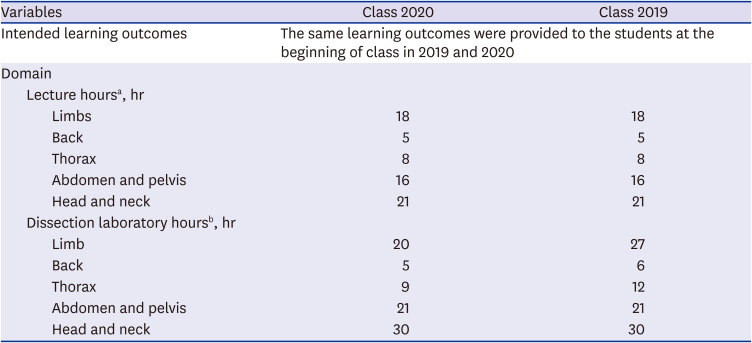

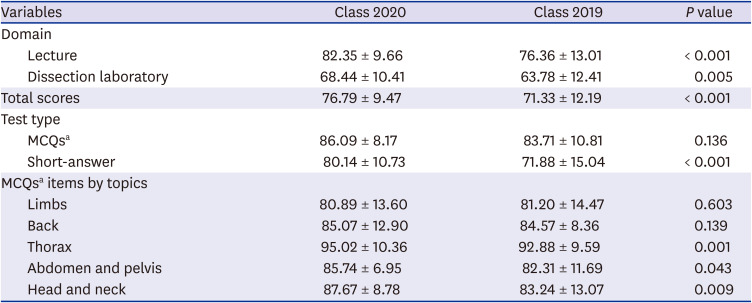





 PDF
PDF Citation
Citation Print
Print



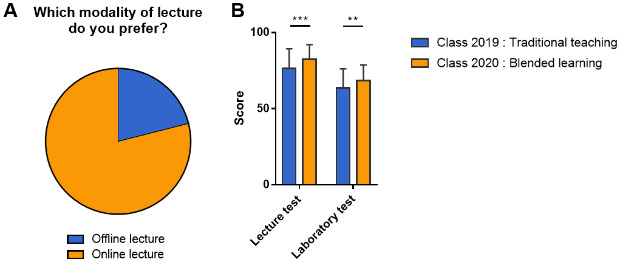
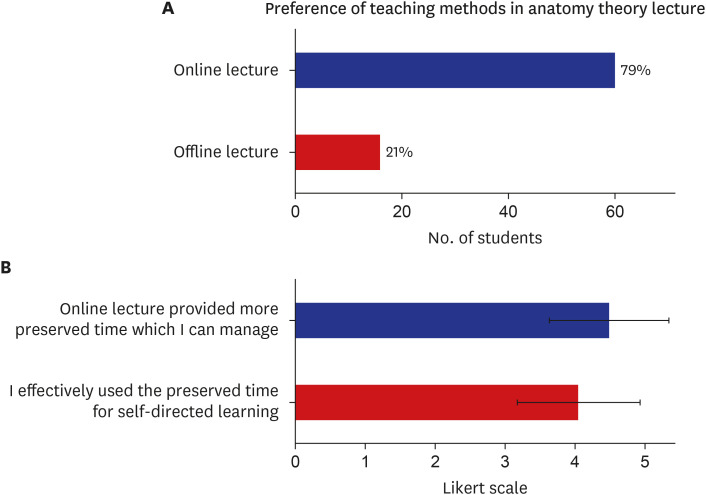
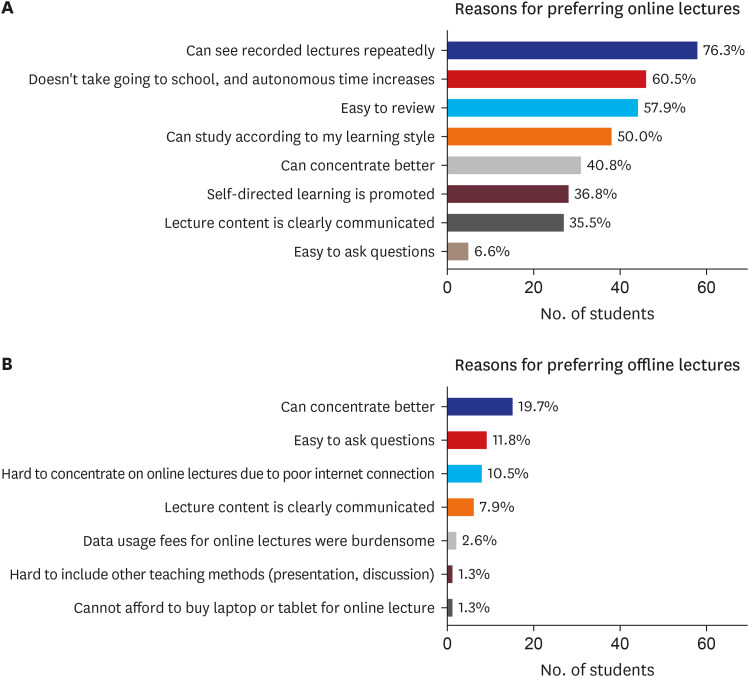
 XML Download
XML Download